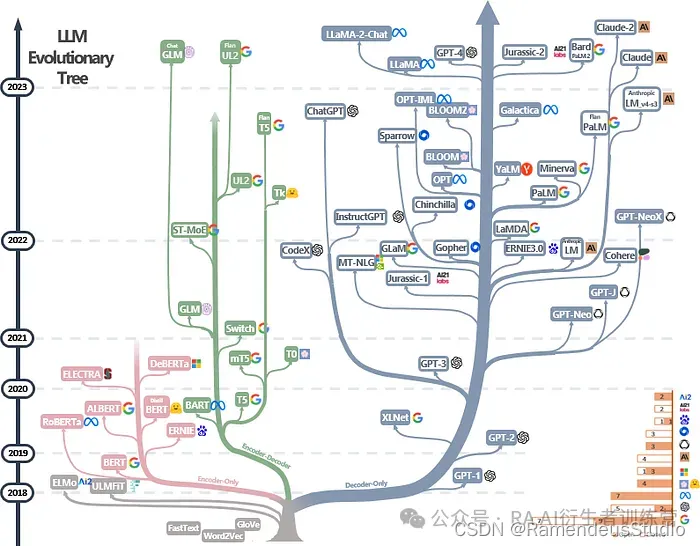一、Modtran安装及环境配置
https://blog.csdn.net/qq_41358707/article/details/134721973
二、ALG配置更新
添加大气RTM。Settings,进入首选项界面,单击RTM选项卡以更新RTM的配置:

从窗口右上角的select RTM弹出菜单中选择一个大气RTM,键入大气RTM可执行文件的路径和名称

单击“Apply”按钮,更新存储在ALG-Conf子文件夹中的RTM配置文件(RTMconf.xml) ;出现以下界面即配置成功,否则需打开RTMconf.xml自行修改。

三、参数设置
1.1、常规配置
该部分不再赘述,用户等级选择“Advanced”,其余为模型及采样,与6SV中相似
6SV生成ALG:ALG(Atmospheric Look-up table Generator)大气查找表生成器下载、配置及6sV2.1生成LUT(学习笔记1)_alg look-CSDN博客

1.2 Atmospheric Variables 大气变量
1.2.1 太阳辐照度 Solar irradiance data(LSUNFL)
变量LSUNFL选择七个太阳辐照度数据中的一个。这个变量对地外太阳辐照度和太阳吸收带的模拟有直接影响。


1.2.2 大气层剖面模型 Atmospheric profile model (MODEL)
变量MODEL从六个地理季节性模型大气、无气体大气或用户自定义数据中指定的大气模型中进行选择,从而根据压力、温度和气体浓度(特别是H2O和O3)定义大气的垂直结构。
这个变量对太阳—目标—传感器光学路径中不同高度的吸收散射过程的模拟有影响。每个模型中预定义的CO2、O3和H2O的柱状含量可以分别由关键输入变量CO2MX、O3STR和H2OSTR覆盖。


1.2.3 CO2混合比 CO2 mixing ratio
变量CO2MX通过用户输入[ppmv]中的CO2MX值,可覆盖model中所选大气模型的预定义CO2总混合比。典型的全球和年度二氧化碳混合比范围从350 ppmv到420 ppmv,典型的平均值约为395 ppmv(默认值)。

1.2.4 O3柱浓度 O3 column concentration
变量O3STR通过用户输入O3STR值(单位为[atm-cm]),可覆盖model中所选大气模型的预定义O3总柱浓度。典型的全球和年度O3浓度范围从0.15 atm-cm(南极臭氧消耗)到0.45 atm-cm,典型的平均值约为0.315 atm-cm。将该值设置为-1(默认值)将使用选定大气模型剖面中的预设O3浓度。

1.2.5 H2O柱浓度 H2O column concentration
变量H2OSTR通过用户输入H2OSTR值(单位为[g·cm-2]),可覆盖model中选定大气模型中预定义的H2O总柱浓度。典型的全球和年度H2O浓度范围为1 g·cm-2至6 g·cm-2,典型的平均值约为3 g·cm-2。
或者,H2OSTR的负值被用作选定大气模型的比例因子。因此,H2OSTR=-1(默认值)使用预定义的大气模型H2O浓度。
在MODTRAN5中,每个剖面高度的水密度不会增加到100%相对湿度(RH)以上,也不会增加到原始值的5倍以上。当达到100%RH极限时,水被分配到其他水平,尽可能达到输入水柱。

1.2.6 16种辅助微量气体 16 auxiliary trace species
变量LYMOLC允许包括(LYMOLC=+)或不包括(LYMOLC=“”,默认值)以下16种辅助痕量物质:OF、HF、HCl、HBr、ClO、OCS、H2CO、HOCl、N2、CH3Cl、H2O2、C2H2、C2H6和PH3。
因此,这个变量对这16种微量气体引起的吸收过程的模拟有影响。

1.3 Aerosol Variables 气溶胶变量

1.3.1 气溶胶模型 Aerosol model (IHAZE)
变量IHAZE选择预定义的气溶胶模型之一或与OPAC气溶胶数据库耦合,从而定义用于边界层(0-2km)的气溶胶光学特性(即消光、吸收和散射)。
The variable IHAZE selects one of the predefined aerosol model or coupled with OPAC aerosol database, thus defining the aerosol optical properties (i.e., extinction, absorption and scattering) used for the boundary-layer (0-2 km). The available options are shown in the Table below:
边界层气溶胶消光系数的相对湿度依赖性基于MODEL(Atmospheric profile model)选择的模型大气的水蒸气含量,仅适用于农村、海洋、城市、对流层和OPAC气溶胶模型。对流层(2-10公里)和平流层(10-30公里)气溶胶垂直剖面的季节依赖性是通过MODEL选择的模型大气自动选择的。
因此,这个变量对太阳-目标-传感器光路中悬浮颗粒引起的吸收散射过程的模拟有影响。
悬浮颗粒的数量与气溶胶光学厚度(Aerosol Optical Thickness ,VIS)键输入变量分开指定。

OPAC给出了0.25至40μm之间的61个波长和8个相对湿度值的光学特性(即消光系数、散射系数和吸收系数、单散射反照率、不对称参数和相位函数)。
变量AERTYPE选择预定义或用户定义的OPAC气溶胶模型之一,从而定义用于边界层(0-2 km)的气溶胶光学特性(即消光、吸收和散射)。

OPAC自定义气溶胶类型:变量PARTYPE定义了用作用户定义的OPAC气溶胶模型(AERTYPE)组件的粒子类型,从而允许用户基于OPAC提供的多功能性引入额外的用户定义气溶胶。可用的气溶胶成分及其最小/最大和默认数值密度值如下表所示,单位为cm-3:
注意,OPAC3.1最多可以选择5种不同的气溶胶成分来定义新的气溶胶类型。

1.3.2 平流层气溶胶模型Stratospheric aerosol model (IVULCN)
变量IVULCN选择一个预定义的平流层气溶胶模型,从而定义平流层(10-30公里)使用的气溶胶光学特性(即消光、吸收和散射)和垂直剖面。它还选择了平流层以上100公里的适当过渡剖面。流星尘消光系数始终用于30至100公里的高度。
悬浮颗粒的数量/垂直分布是固定的。
The variable IVULCN selects one of the predefined stratospheric aerosol model, thus defining the aerosol optical properties (i.e., extinction, absorption and scattering) and vertical profile used for the stratospheric-layer (10-30 km). It also selects appropriate transition profiles above the stratosphere to 100 km. Meteoric dust extinction coefficients are always used for altitudes from 30 to 100 km.
This variable, therefore, has an impact on the simulation of the absorption-scattering processes caused by suspended particles in the sun-target-sensor optical path.
The amount/vertical profile of suspended particles is fixed .


1.3.3 气溶胶光学厚度Aerosol optical thickness (VIS)
变量VIS(无量纲)定义了550nm处垂直气溶胶消光系数的柱积分值。卫星观测的典型全球和年度气溶胶光学厚度值范围为0.05至0.4,极值为0(无气溶胶)至1,典型平均值约为0.12(默认值)
The variable VIS (dimension-less) defines the column-integrated value of the vertical aerosol extinction coefficient at 550 nm. Typical worldwide and annual aerosol optical thickness values for satellite observations range from 0.05 to 0.4, with extreme values of 0 (no aerosols) to 1 and typical mean values around 0.12 (default value)
该变量控制气溶胶引起的吸收和散射效应的强度。

1.3.4 相函数不对称因子Henyey-Greenstein asymmetry factor (G)
变量G(无量纲)定义了相函数的不对称参数,从而控制了气溶胶相函数的形状,这对气溶胶引起的散射效应有影响。对于-1(后向散射)到+1(前向散射)之间的值,通过与光谱无关的Henyey-Greenstein经验近似对相位函数进行建模。
The variable G (dimension-less) defines the asymmetry parameter of the phase function, thus controling the shape of the aerosol phase function, which has an influence on the scattering effects caused by aerosols. For values between -1 (backward scattering) to +1 (forward scattering), the phase function is modelled through the spectrally-independent Henyey-Greenstein empirical approximation:

其中Φ是作为散射角θ的函数的气溶胶相位函数,g是相函数的不对称参数。
where Φ is the aerosol phase function as function of the scattering angle θ and g is the Heyney-Greenstein asymmetry parameter.
对于典型的气溶胶,在400-2500 nm的光学范围内,陆地上的G值在0.5和0.8之间.
如果G=10(默认值),MODTRAN将使用球形粒子的Mie近似(Mie,1908)来对相位函数进行建模。在这种情况下,光谱相关的不对称参数将自动取自IHAZE中选择的气溶胶模型。
If G=10 (default value), MODTRAN will use instead the Mie approximation of spherical particles (Mie, 1908) to model the phase function. In this case, the spectrally-dependent asymmetry parameter will be automatically taken from the aerosol model selected in IHAZE.

1.3.5 消光指数Angstrom exponent (ASTMX)
变量ASTMX通过Ångström近似定义了气溶胶消光系数的光谱依赖性。
The variable ASTMX defines the spectral dependence of the aerosol extinction coefficient through the Ångström approximation.

其中εk是消光系数,λ0是参考波长(通常为550nm),α是Ångström指数。
where εk is the extinction coefficient, λ0 if a reference wavelength (typically 550 nm) and α is the Ångström exponent.
因此,这个变量对气溶胶引起的吸收和散射效应有影响。对于典型的气溶胶,α值的范围从0到2。
如果ASTMX=0(默认值),MODTRAN将使用IHAZE中选择的气溶胶模型中气溶胶消光系数的光谱依赖性。

1.3.6 边界层比例高度Boundary layer scale height(Z)
气溶胶颗粒密度通常遵循递减的垂直分布,在正常气象条件下,边界层(0公里至H公里)和对流层(H公里至10公里)的密度更高。在这两层中,由于陆地表面和大气之间的相互作用(如生物质燃烧、沙尘暴或城市污染),边界区域气溶胶类型的可变性和混合性更高。每层的垂直分布在很大程度上取决于颗粒密度和气象条件,特别是风、湍流以及压力和温度的垂直剖面。
在ALG中,按照(Hess等人,1998)中的方法,使用指数衰减函数对边界层中消光系数的垂直分布进行建模。该指数衰减函数的特征是标度高度变量Z(km),其典型值在0.5 km和99 km之间(对于均质层)。如果用户引入Z的值,ALG将默认使用H=2km的值作为边界层顶部高度。
如果不引入该值,ALG将使用(默认选项)预定义的MODTRAN气溶胶垂直分布。
这个变量控制着气溶胶在边界层内的分布,从而影响气溶胶引起的吸收和散射效应。
Aerosol particle density typically follows a decreasing vertical distribution with, in normal meteorological conditions, higher densities in the boundary layer (0 km to H km) and troposphere (H km to 10 km). Among these two layers, variability and mixture of aerosol types is higher in the boundary region due to interactions between land surface and atmosphere (e.g., biomass burning, dust storms or urban pollution). The vertical distribution in each layer largely depends on particle density and meteorological conditions, particularly wind, turbulence and vertical profiles of pressure and temperature.
In ALG, an exponential decay function is used to model the vertical distribution of the extinction coefficient in the boundary layer following the approach in (Hess et al., 1998). This exponential decay function is characterized by the scale-height variable Z (km), which has typical values between 0.5 km and 99 km (for a homogeneous layer). If the user introduces a value for Z, ALG will use by default a value of H=2 km for the boundary layer top height.
If this value is not introduced, ALG will use instead (default option) the predefined MODTRAN aerosol vertical distribution.
This variable controls the distribution of aerosols within the boundary layer, which influences the absorption and scattering effects caused by aerosols.

1.3.7 边界层顶部高度Boundary layer top height (H)
变量H(km)定义了气溶胶垂直分布中边界层的顶部高度。在典型的气象条件下,H的值在1公里到3公里之间,典型的平均值为2公里。
如果用户没有为H引入任何值,ALG将默认使用预定义的MODTRAN气溶胶垂直分布。
相反,如果用户引入H的值,ALG将使用指数衰减函数来按照(Hess等人,1998)中的方法对边界层中消光系数的垂直分布进行建模。在这种情况下,比例高度的默认值为Z=8 km。
该变量控制边界气溶胶层的延伸,从而影响气溶胶引起的吸收和散射效应。
The variable H (km) defines the top height of the boundary layer in the aerosol vertical distribution. In typical meteorological conditions the value of H ranges from 1 km to 3 km, with a typical mean value of 2 km.
If the user does not introduce any value for H, ALG will use by default the predefined MODTRAN aerosol vertical distribution.
Instead, if the user introduces a value for H, ALG will use an exponential decay function to model the vertical distribution of the extinction coefficient in the boundary layer following the approach in (Hess et al., 1998). In this case, the default value for the scale height will be Z=8 km.
This variable controls the extension of the boundary aerosol layer, which influences the absorption and scattering effects caused by aerosols.

1.3.8 单次散射反照率Single scattering albedo(SSA)
变量SSA(单散射反照率)是一个无量纲变量,它定义了气溶胶散射和消光系数之间与光谱的比率,从而控制了气溶胶吸收和散射的分数。其值范围从0到1,陆地上的典型气溶胶值在0.8到1之间,光学范围为400-2500 nm.
The variable SSA (Single Scattering Albedo) is a dimension-less variable that defines the spectrally-independent ratio between an aerosol scattering and extinction coefficients, thus controling the fraction of aerosol absorption and scattering. Its values range from 0 to 1, with typical aerosol values over land between 0.8 and 1 in the optical range 400-2500 nm (Holben et al., 1998, Hess et al., 1998, Dubovik et al., 2002, Kinne, 2019).
如果SSA=-1(默认值),MODTRAN将使用IHAZE中选择的气溶胶模型中SSA的预定义光谱依赖性。

1.4 Geometric Variables 几何变量

1.4.1 地面高度Ground altitude(GNDALT)
变量GNDALT定义了地面目标的海拔高度(以[km]为单位),从0 km(海平面,默认值)到9 km不等。该变量控制太阳目标传感器光路的长度,从而增加/减少气体和气溶胶引起的吸收和散射的影响。
The variable GNDALT defines the altitude (in [km]) of the ground target, which varies from 0 km (sea-level, default value) to 9 km.This variable controls the length of the sun-target-sensor optical path, which increases/decreases the effects of absorption and scattering caused by gasses and aerosols.

1.4.2 传感器高度Sensor altitude(H1)
变量H1定义了传感器的海拔高度(以[km]为单位),其可能在0km到100km之间变化(卫星传感器,默认值)。该变量控制目标-传感器光路的长度,从而增加/减少气体和气溶胶引起的吸收和散射的影响。
The variable H1 defines the altitude (in [km]) of a sensor, which may vary between 0 km to to 100 km (satellite sensor, default value).This variable controls the length of the target-sensor optical path, which increases/decreases the effects of absorption and scattering caused by gasses and aerosols.

1.4.3 太阳天顶角Solar zenith angle(PARM2)
变量PARM2定义了太阳天顶角(单位[deg]),它在0度(天顶)到90度(地平线上)之间变化,默认值为55度。该变量控制太阳辐照度的强度(通过cos(PARM2)加权)。此外,它还定义了太阳-目标光路的长度和几何形状,这增加/减少了气体和气溶胶引起的吸收和散射的影响。
The variable PARM2 defines the Solar Zenith Angle (in [deg]), which varies between 0 deg (at zenith) to 90 deg (over the horizon), with a default value of 55 deg.This variable controls the strength of the solar irradiance (weighted by cos(PARM2)). Also, it defines the length and geometry of the sun-target optical path, which increases/decreases the effects of absorption and scattering caused by gasses and aerosols.

1.4.4 观测天顶角Visual zenith angle(ANGLE)
变量ANGLE定义观测天顶角(单位[deg]),该角度在0度(对于最低点仪器,默认值)到90度之间变化。该变量定义了目标传感器光路的长度和几何形状,这增加/减少了气体和气溶胶引起的吸收和散射的影响。
The variable ANGLE defines the Visual Zenith Angle (in [deg]), which varies between 0 deg (for nadir-looking instruments, default value) to 90 deg (for limb-pointing instruments).This variable defines the length and geometry of the target-sensor optical path, which increases/decreases the effects of absorption and scattering caused by gasses and aerosols.

1.4.5 相对方位角Relative azimuth angle(PARM1)
变量RAA定义相对太阳方位角(以北以东[deg]为单位),即参考点处两个垂直平面之间的角度,一个包含观测,另一个包含太阳辐射路径。其值在0度到360度之间变化,默认值为45度。该变量定义了太阳-目标-传感器路径的几何形状,这增加/减少了气溶胶引起的散射影响。
The variable RAA defines the Relative solar Azimuth Angle (in [deg] East of North), i.e., the angle between two vertical planes at the reference point, one containing the line-of-sight and the second containing the solar illumination path. Its value varies between 0 deg to 360 deg, with a default value of 45 deg.This variable defines the geometry of the sun-target-sensor optical path, which increases/decreases the effects of scattering caused by aerosols.

1.5 Advanced Variables 高级变量

1.5.1 方位依赖散射 Azimuth dependence scattering(DISAZM)
变量DISAZM允许用户包括DISORT使用的散射方位相关性。将DISAZM=T设置为将方位依赖性包括在视线多重散射太阳光中。由于此选项增加了计算时间,如果只需要垂直通量,如果太阳或观测天顶角接近垂直,或者如果太阳多次散射是一个小的辐射分量(例如,波长在~8um以上),请设置DISAZM=F(默认值)。
The variable DISAZM allows the user to include the scattering azimuth dependence used with DISORT. Set DISAZM=T to include azimuth dependence in the line-of-sight multiple scatter solar. Since this option increases computation time, set DISAZM=F (default value) if only vertical fluxes are needed, if solar or viewing zenith angle is near vertical, or if solar multiple scattering is a small radiance component (e.g., for wavelengths above ~8um).

1.5.2 Correlated-k(MODTRN)
变量MODTRN选择用于辐射传输的波段模型算法。这包括正常的MODTRAN波段模型(MODTRN=M)或中速(MODTRN=KM,每个光谱仓33个吸收系数)或慢速(MODTRN=KS,默认值,17个系数)的最准确但较慢的MODTRAN相关-k选项(Berk等人,1998)。
The variable MODTRN selects the band model algorithm used for the radiative transport. This includes the normal MODTRAN band model (MODTRN=M) or the most accurate but slower MODTRAN correlated-k option in its medium speed (MODTRN=KM, 33 absorption coefficients per spectral bin) or slow speed (MODTRN=KS, default value, 17 coefficients) (Berk et al., 1998) .

1.5.3 Isaac's 2-stream (0) or Number of DISORT streams (2-32)( NSTR)
变量NSTR允许选择在多次散射的计算中使用的方法。以下选项可用:
如果NSTR=0,MODTRAN将使用更快但不太准确的Isaac双流算法(Isaacs等人,1998)。
如果NSTR取2和32之间的一个值,则MODTRAN使用NSTR中选择的流的数量激活DISORT离散纵坐标多重散射算法(Stammes等人,1988)。使用高值通常可以提高精度,但会减慢计算速度。NSTR=8(默认值)已经足够了,尽管如果对高度前向峰值散射进行建模,可能需要更多的流。
如果选择NSTR=-1,则在大气窗口区域中的选定光谱点处执行DISORT计算。然后,这些DISORT弧度用于缩放整个波长区域的Isaac值。
If NSTR=0, MODTRAN will use the faster but less accurate Isaac's two-stream algorithm (Isaacs et al., 1998).
If NSTR takes one value between 2 and 32, MODTRAN activates the DISORT discrete ordinate multiple scattering algorithm (Stammes et al., 1988) with the number of streams selected in NSTR. Using high values generally improves accuracy but slows computation. NSTR=8 (default value) consider enough, although more streams may be desirable if modeling highly forward peaked scatters.
If NSTR=-1 is chosen, DISORT calculations are performed at selected spectral points in the atmospheric window regions. These handfuls of DISORT radiances are then used to scale Isaac's values for the entire wavelength region.

1.5.4 MODTRAN print outputs(NOPRNT)


1.5.5 Transfer functions calculation mode(DISALB)
变量DISALB允许用户根据MODTRAN输出数据选择用于计算大气传递函数的算法。有两种选择:
在DISALB=F(默认值)的情况下,ALG实现了Guanter等人2009年开发的双流MODTRAN询问技术。
DISALB=T时,MODTRAN将自动计算大气层的球面反照率和视线和日地路径的散射透射率。这是基于(Chandrasekhar,1950,Stamnes,1982)的作品。
在DISALB=W的情况下,ALG实现了Verhoef和Bach于2012年开发的四流MODTRAN询问技术。
With DISALB=F (default value), ALG implements the 2-streams MODTRAN interrogation technique developed by Guanter et al., 2009.
With DISALB=T, MODTRAN will automatically calculate the spherical albedo of the atmosphere and diffuse transmittance for the line-of-sight and sun-to-ground path. This is option is based on the works by (Chandrasekhar, 1950, Stamnes, 1982). Additional information can be found in: A. Berk, G.P. Anderson, P.K. Acharya, & E.P. Shettle (May 2011), "MODTRAN㈢ 5.2.1 User's Manual document (Appendix F)", Spectral Sciences, Inc.
With DISALB=W, ALG implements the 4-streams MODTRAN interrogation technique developed by Verhoef and Bach, 2012.

1.5.6 Modify aerosol optical properties by H2O(H2OAER)
可变H2OAER允许修改气溶胶的光学特性,以反映水柱结垢引起的原始相对湿度分布的变化(见H2OSTR)。
当H2OAER=T(默认值)时,气溶胶的光学特性会被修改以反映H2O含量的变化。
在H2OAER=F的情况下,气溶胶的光学性质没有改变。
The variable H2OAER allows to modify the aerosol optical properties to reflect the changes from the original relative humidity profile arising from the scaling of the water column (see H2OSTR).
With H2OAER=T (default value), the aerosol optical properties are modified to reflect changed in the H2O content.
With H2OAER=F the aerosol optical properties are not modified.

1.6 OPAC及MODTRAN模拟
生成具有不同节点分布选项的大气LUT。这些LUT将基于OPAC气溶胶数据库和MODTRAN之间的耦合。
ALG将自动创建输入和输出OPAC和MODTRAN文件(MODTRAN分别为.tp5和.tp7)。在MODTRAN的情况下,这些输入/输出文件的名称为combNhop5和combNshop15,其中N是识别LUT节点组合之间的索引。
进度条将显示MODTRAN输入文件的写入情况。完成后,OPAC将使用所选默认气溶胶和用户定义气溶胶的配置运行。这将创建一个名为LUTfile_OPAC.h5的OPAC LUT文件,该文件包含所选OPAC气溶胶的所有相关气溶胶光学特性。然后,MODTRAN将对这些RTM输入文件进行模拟,包括从该OPAC相关文件中提取的气溶胶光学特性。

LUTfile_OPAC.h5文件包含有关相位函数、消光系数(以km-1为单位)、吸收系数(以km为单位)和不对称参数的信息。这些光学特性在波长VARSPC(以μm为单位)和相对湿度RH(以%为单位)网格中给出。相位函数也在散射角ANGFgrid(以度为单位)下给出。我们可以通过从.h5文件中读取相应的数据集来加载这些信息
This file contains information about the phase function, the extinction coefficient (in km-1), the absorption coeffiecient (in km-1) and the asymmetry parameter. These optical properties are given in a wavelength VARSPC (in μm) and relative humidity RH (in %) grid. The phase function is also given at an scattering angle ANGFgrid (in deg). We can load this information by reading the corresponding datasets from the .h5 file。
【该文档由“ALG帮助文档”翻译,因水平有限,翻译不当之处敬请指正。】


















